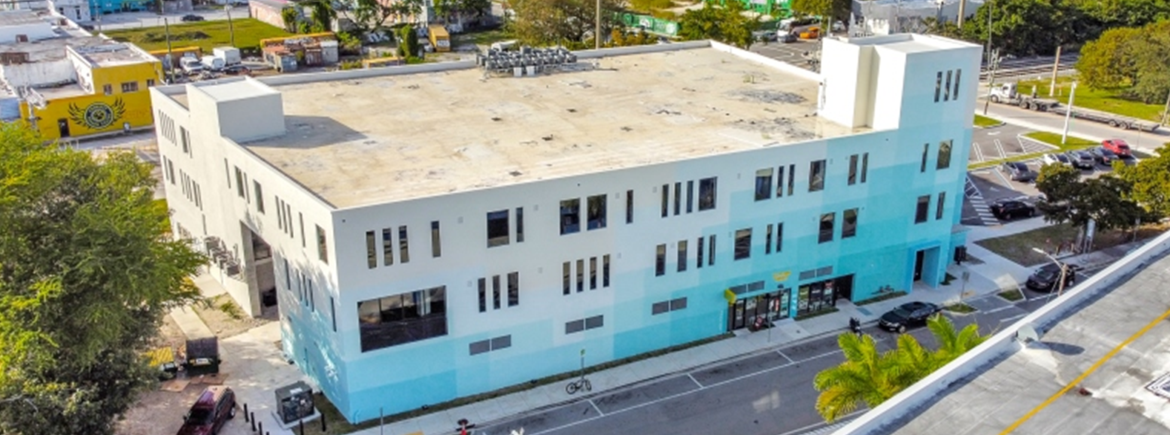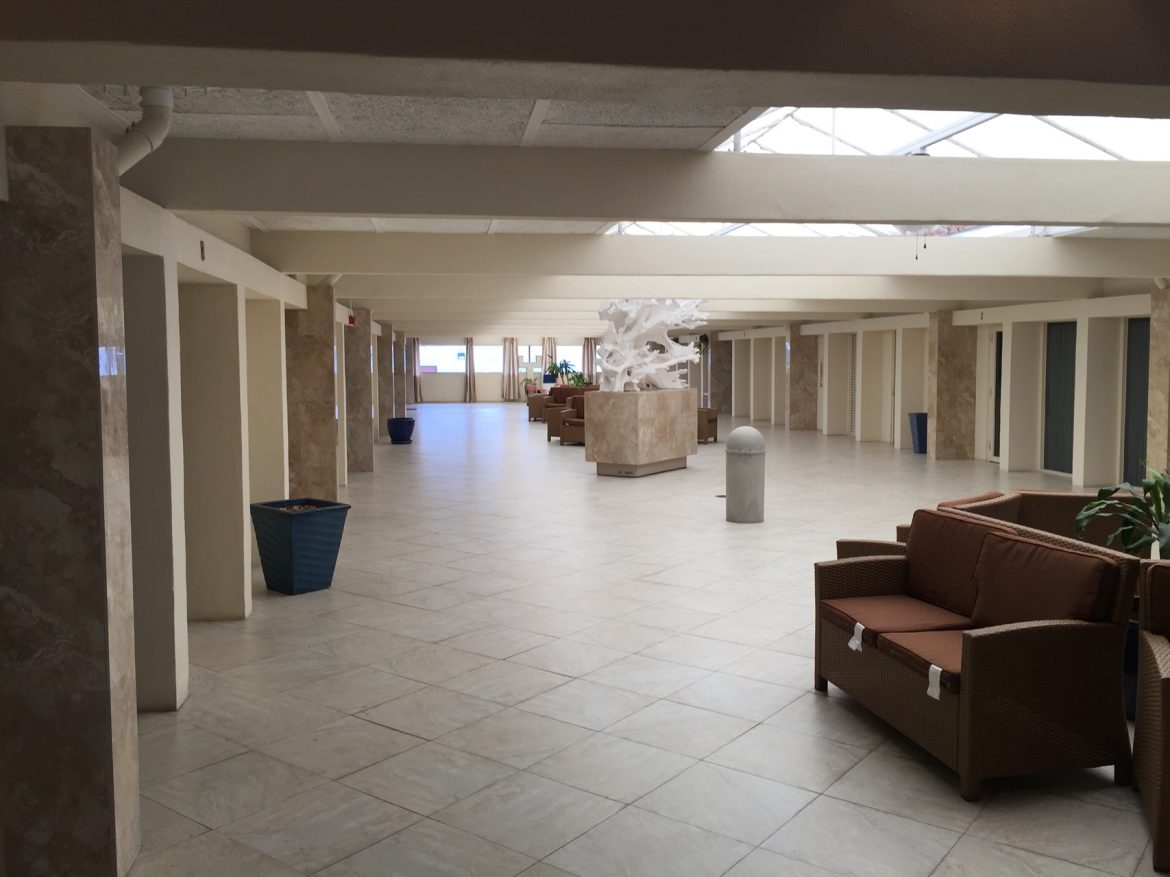
Gridline Properties has closed eight lease agreements totaling nearly 40,000 square feet of space on behalf of commercial real estate investor and landlord, Big Move Properties, marking 100 percent occupancy of the newly renovated office building at 1900 NE Miami Ct.
Leasing Director and Senior Associate Emilia Howard facilitated the lease transactions on behalf of the landlord for the centrally located building at the intersection of Wynwood and Downtown Miami.
The three-floor office building, owned by Big Move Properties, is known as ‘The Sky Building’ and spans a total of 58,500 square feet. The new tenants will reside on the second and third floor, totaling nearly 40,000 square feet. The first floor was previously leased. The building was recently renovated, designed by interior design firm, ReDefine Design, to include modern, loft style offices with glass partitions, LED lights, natural light, high ceilings and exposed, artistic brick walls. Big Move Properties offers tenants build-to-spec office options. Located along North Miami Avenue, Wynwood’s most trafficked artery, the property offers easy access and walking distance proximity to many Wynwood eateries.
Leases were signed with Touchland LLC, Seitrack US, 4Eon, Building Drops, Supply Caddy, Aroma 360, MicroDesign, Sherpa, and Monster Energy, newcomer to the market. All tenants have moved in, except for Monster Energy, which is slated to move in in early May. Details of the newly signed leases and tenants can be found below.
- Monster Energy – Company that produces a variety of energy drinks, coffee drinks, hydrating sports drinks, juices, teas, beer and alcoholic beverages. | Leased 7,932 square feet | Represented by Vivian Gonzalez and John Marshall of Cushman and Wakefield
- Aroma 360 – A luxury scenting company that provides scenting solutions for homes, businesses, and commercial spaces – even cars. | Leased 9,588 square feet | Represented by Gridline Properties
- Supply Caddy – A leading global manufacturer and supplier of packaging and disposables for the food service industry. | Leased 4,298 square feet | Represented by Carlyle Coffin of Stream Realty Partners – Florida
- Touchland LLC – An award-winning lifestyle brand that produces a unique hand sanitizing mist experience in a variety of scents. | Leased 2,927 square feet | Represented by Emilia Howard of Gridline Properties
- Seitrack US – Artist management and booking agency specializing in key areas for artistic development. | Leased 2,625 square feet | Represented by Emilia Howard of Gridline Properties
- Building Drops – A structural engineering consulting company with a focus on the glazing industry. | Leased 3,375 square feet | Represented by Mateo Romero of Gridline Properties
- Mircro Design & Sherpa – The two full-service food & beverage design companies will share an office. | Leased 2,550 square feet | Represented by Gridline Properties
- 4EON – A leading, full-service experiential marketing agency that specializes in merging both the live and digital worlds for top global brands. | Leased 1,334 square feet | Represented by Luca Migliore of Gary Hennes Realtors
Despite market challenges with office leasing, Gridline Properties was able to secure a strong roster of local and institutional tenants to this adaptive reuse project in the Wynwood neighborhood.
“The success we’ve had while leasing this building proves that Wynwood continues to appeal to growing businesses,” said Emilia Howard, Leasing Director and Senior Associate at Gridline Properties. “We are thrilled to have guided these tenants through the leasing process and to work with a visionary landlord like Big Move Properties that continues to meet the evolving needs of today’s businesses.”
Big Move Properties is a commercial real estate development firm specializing in unique, creative spaces customized for businesses seeking to capitalize on the energy of Miami’s most exciting neighborhoods including Wynwood, Allapattah and Little River.
“The Sky Building is an idyllic property that embodies the essence of Wynwood and offers a dynamic work environment for tenants,” said Doug Levine, Chief Executive Officer of Big Move Properties. “We enjoyed working with Gridline Properties throughout this process and are excited to welcome our new tenants.”

